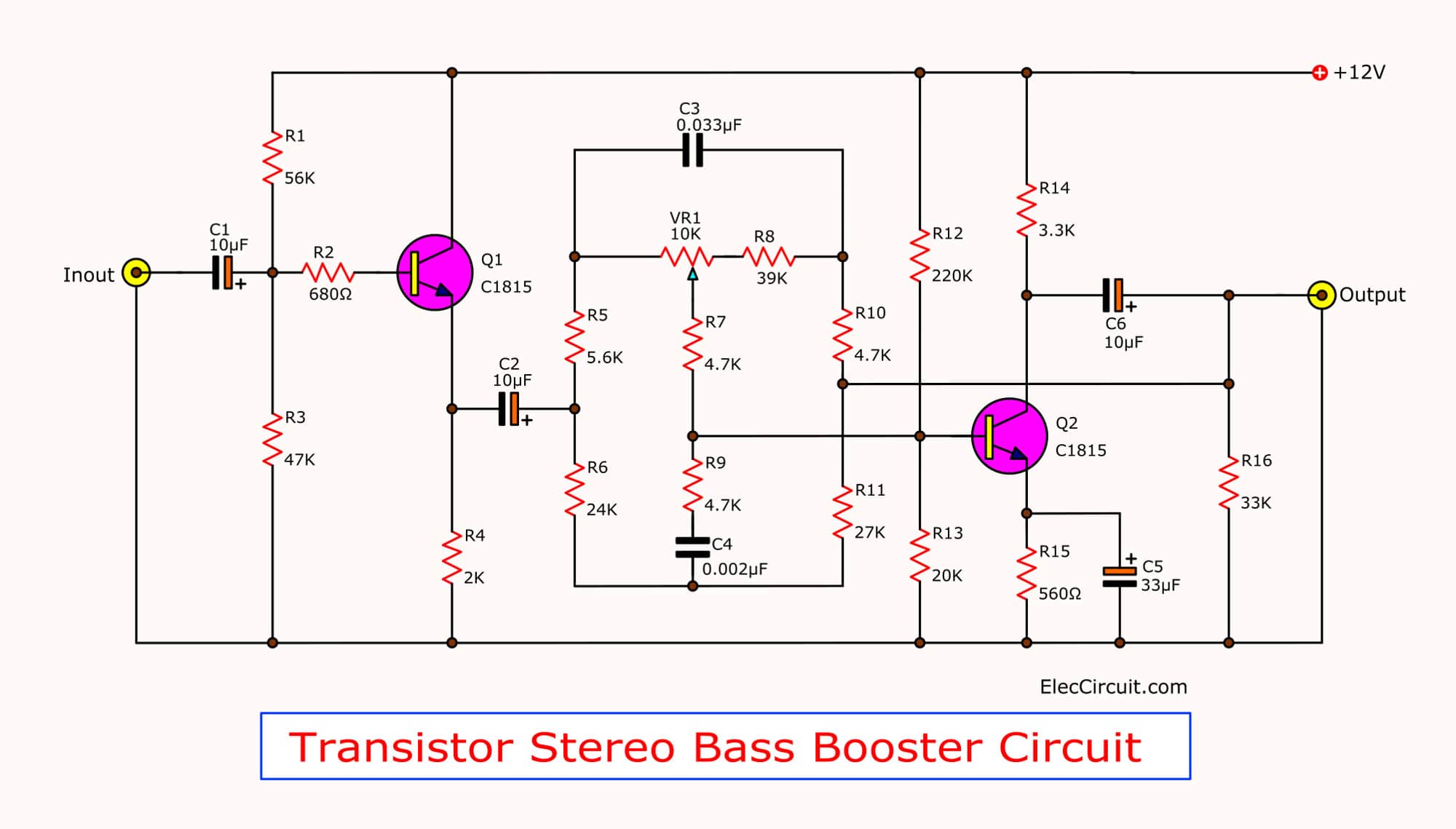Transistor Diagram

Transistor diagram
A transistor is a miniature semiconductor that regulates or controls current or voltage flow in addition amplifying and generating these electrical signals and acting as a switch/gate for them. Typically, transistors consist of three layers, or terminals, of a semiconductor material, each of which can carry a current.
What are the parts of transistors?
There are typically three electrical leads in a transistor, called the emitter, the collector, and the base—or, in modern switching applications, the source, the drain, and the gate.
What is transistor circuit?
A transistor is a semiconductor device used to amplify or switch electrical signals and power. The transistor is one of the basic building blocks of modern electronics. It is composed of semiconductor material, usually with at least three terminals for connection to an electronic circuit.
What are the 3 legs of a transistor?
The transistor has three legs, the Collector (C), Base (B), and Emitter (E). Sometimes they are labeled on the flat side of the transistor.
What is transistor & Types?
A transistor is a semiconductor device used to amplify or switch electronic signals. Transistors are broadly divided into three types: bipolar transistors (bipolar junction transistors: BJTs), field-effect transistors (FETs), and insulated-gate bipolar transistors (IGBTs).
What is the unit of transistor?
The standard units of a transistor for electrical measurement are Ampere (A), Volt (V), and Ohm (Ω), respectively.
What is the principle of transistor?
Well, the very basic working principle of a transistor is based on controlling the flow of current through one channel by varying intensity of a very smaller current that is flowing through a second channel. Also Read: Transistor as a Switch. Transistor as Amplifier.
What is base of transistor?
Base is the central segment of thin size and is lightly doped (to reduce recombination). Collector is largest in size and moderately doped at one end of the transistor. It collects a majority of majority charge carriers.
What is NPN and PNP transistor?
PNP switches On by a low signal whereas NPN switches ON by a high signal. As we are aware that in PNP transistor, the P represents the polarity of the emitter terminal and N represents the polarity of the base terminal.
Why does a transistor have 3 pins?
Most discrete transistors have 3 terminals representing base, collector and emitter for a bipolar junction transistor (BJT) or gate, drain and source for a field effect transistor (FET) or Metal Oxide (Silicon) FET (MOSFET), hence 3 legs or for some power devices a 'can' which serves as the heatsink mounting (collector
What do the 3 pins of a transistor do?
The transistor has three legs, these are the base, collector and the emitter. The emitter is always connected to 0v and the electronics that is to be switch on is connected between the collector and the positive power supply. The base of the transistor is used to switch current through the collector and emitter.
What does a NPN transistor do?
The NPN transistor is designed to pass electrons from the emitter to the collector (so conventional current flows from collector to emitter). The emitter "emits" electrons into the base, which controls the number of electrons the emitter emits.
What are the 2 types of transistor?
Transistors typically fall into two main types depending on their construction. These two types are bipolar junction transistors (BJT) and Field Effect Transistors (FET).
Why is transistor important?
Transistors transformed the world of electronics and had a huge impact on computer design. Transistors made of semiconductors replaced tubes in the construction of computers. By replacing bulky and unreliable vacuum tubes with transistors, computers could now perform the same functions, using less power and space.
What is a transistor example?
Microphones are a classic example of daily use devices that make use of transistors for their basic operation. Various microphones such as a condenser microphone typically make use of an electronic circuit that tends to perform impedance modification by converting mechanical waves into an electrical signal.
What is a symbol of transistor?
| Name | Description |
|---|---|
| PNP Bipolar Transistor | Allows current flow when low potential at base (middle) |
| Darlington Transistor | Made from 2 bipolar transistors. Has total gain of the product of each gain. |
| JFET-N Transistor | N-channel field effect transistor |
| JFET-P Transistor | P-channel field effect transistor |
What are the two main uses of a transistor?
The core use of transistors includes switching applications or both amplification and switching.
What is diode value?
In a small silicon diode operating at its rated currents, the voltage drop is about 0.6 to 0.7 volts. The value is different for other diode types—Schottky diodes can be rated as low as 0.2 V, germanium diodes 0.25 to 0.3 V, and red or blue light-emitting diodes (LEDs) can have values of 1.4 V and 4.0 V respectively.
Does transistor work on AC or DC?
A transistor audio amplifier for example is an AC signal amplifier, since the microphone generally generates an AC output. And here is a point that many people confuse: Transistors are NOT AC components: Transistors can only operate with DC signals!
What are the application of transistor?
They, as amplifiers, are being used in various oscillators, modulators, detectors and nearly in any circuit in order to perform a function. In a digital circuit, transistors have an application as switches. Transistor is a device that regulates the current flow and are usually used in electric circuits.










Post a Comment for "Transistor Diagram"